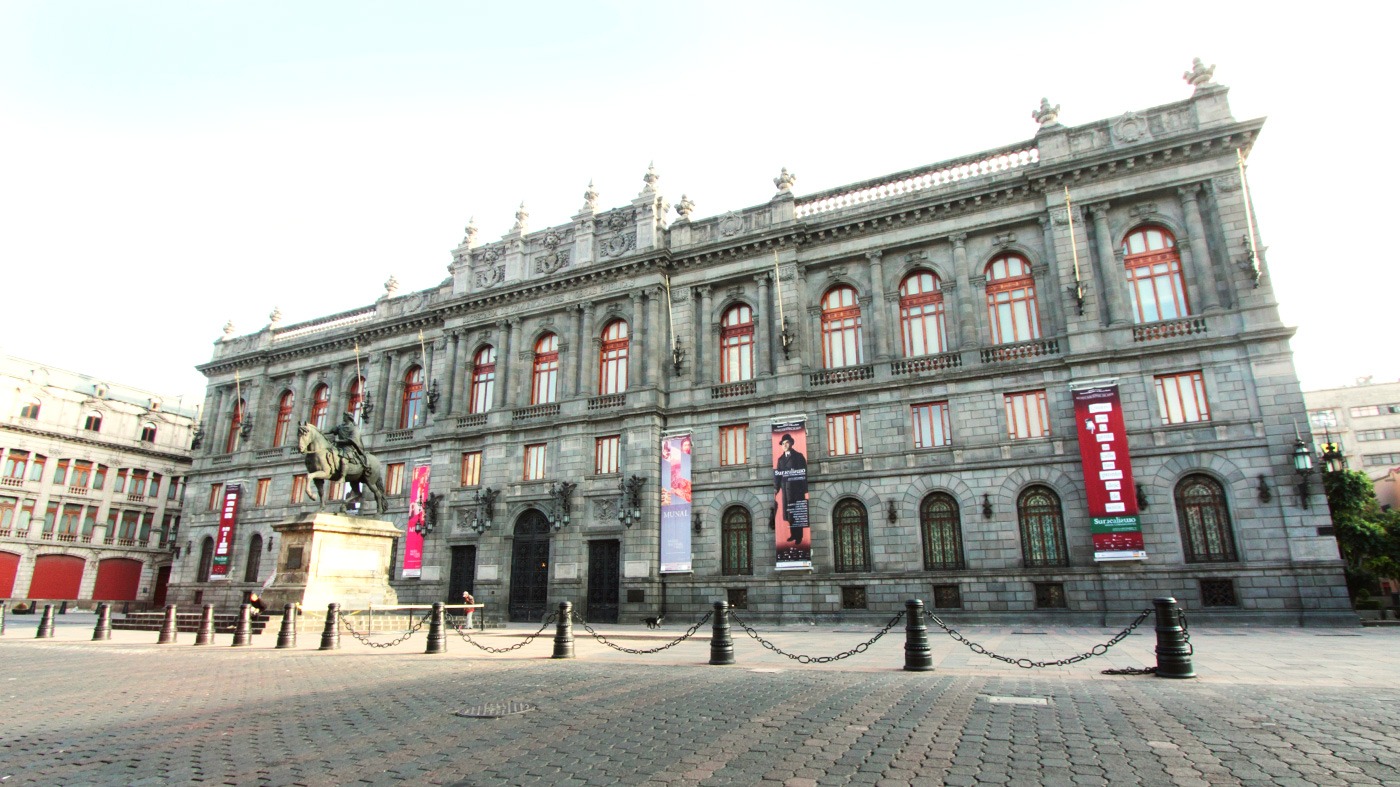
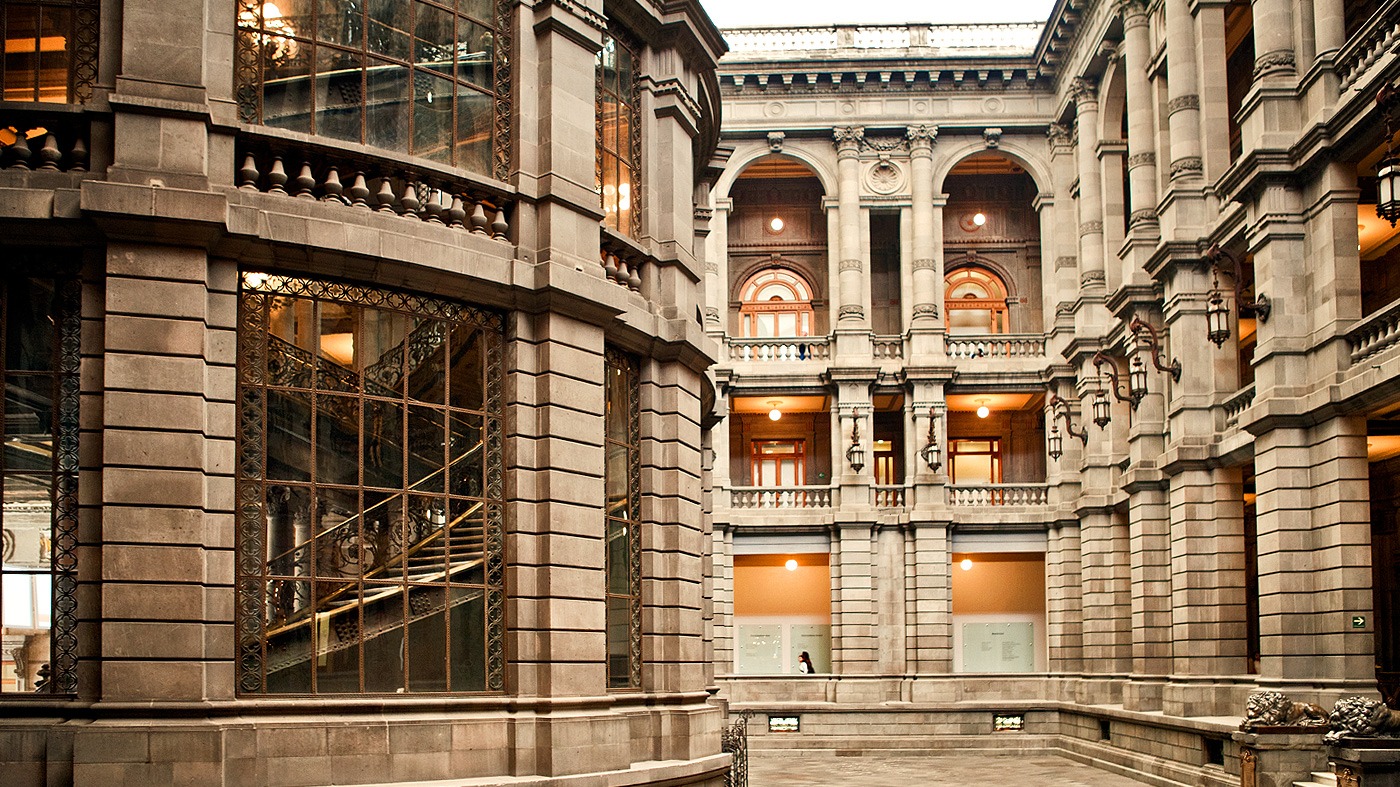

Photo: Juan Carlos Fonseca Mata on Wikimedia Commons
Mexico’s National Art Museum, the Museo Nacional de Arte (MUNAL) is housed, in the city center, in a stunning neoclassical building. With a very worthy collection to back up Mexico’s place in the history of art, works are concentrated from the mid-16th century to the mid-20th century.
With Tolsá’s enormous equestrian statue of Charles IV of Spain out front, (the plaza is named for Tolsá, too), it’s one of the most visited museums in the city. Temporary exhibitions cover themes in the history of Mexican art as well as many strong temporary exhibits traveling from abroad.
Founded in 1982, the museum focuses on exhibition, study, and diffusion of Mexican and international art. A permanent collection contains more than 3,000 works and the building has some 5,500 square meters of exhibition space. A subdivision of the Instituto Nacional de Bellas Artes y Literatura (INBAL), the MUNAL is likewise involved in the conservation, exhibition, and study of the fine arts of Mexico.
The collection is subdivided into three distinct periods. A first covers the colonial period from 1550 to 1821. The second covers the first century after Mexican Independence and, a third covers the period after the Mexican Revolution through the 1950s. In general, artworks from after these periods are more likely to be created and displayed at a number of other museums affiliated with the INBAL.
Originally, for the Palace of Communications building, Italian architect Silvio Contri was contracted to design and build a “palace” for the Secretariat of Communications and Public Works. It was begun in 1904 and completed in 1911.
Always intended to show off a national commitment to modernization, the palace design included mixed elements from multiple older architectural styles, which is characteristic of the time period (see the Postal Palace for another strong example). Decorative elements in the building were completed in Florence, as were the door knockers, window frames, the leaded crystal, some stonework, furniture, lamps and ironwork.
A Reception Hall on the second floor was the preferred location for President Porfirio Díaz’s later public declarations and for receiving foreign dignitaries. The building served for sometime after as the National Archive, and was converted into the National Art Museum only in 1982.
Hours: Tuesday through Sunday, 10 a.m. to 5:30 p.m.
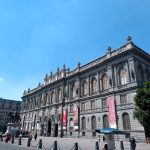 The building was designed by the Italian architect Silvio Contri, on the site of the old San Andrés College of the Society of Jesus which had become a hospital. The present building was begun in 1904, with national labor and Italian craftsmen. It was completed by 1911. It was originally the headquarters of the Secretariat of Communications, until another building was constructed and the palace was converted into the General Archive of the Nation. By 1982 the sumptuous palace opened its doors as the National Museum of Art and later the Telegraph Museum was opened here too.
The building was designed by the Italian architect Silvio Contri, on the site of the old San Andrés College of the Society of Jesus which had become a hospital. The present building was begun in 1904, with national labor and Italian craftsmen. It was completed by 1911. It was originally the headquarters of the Secretariat of Communications, until another building was constructed and the palace was converted into the General Archive of the Nation. By 1982 the sumptuous palace opened its doors as the National Museum of Art and later the Telegraph Museum was opened here too.
Heart of México Walking Route: Manuel Tolsá - Santa Veracruz Route
< < Ex-convento de Betlemitas | Palacio de Correos > >
Proyecto “Corredor de Cultura Digital”.
Nombre de la investigación: Investigación Centro Histórico, Monumentos, Edificios y Puntos de Interés (2023)
Dirección de investigación y diseño de Rutas: Acércate al Centro A.C. Guadalupe Gómez Collada
Coordinación e investigación histórica: Fideicomiso del Centro histórico Dir. Maestra Loredana Montes
 +52 (55) 8647 5430
+52 (55) 8647 5430
 http://www.munal.mx/munal/
http://www.munal.mx/munal/
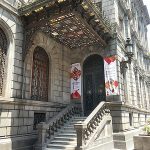
Nearest at 0.01 kms.
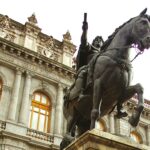
Nearest at 0.01 kms.
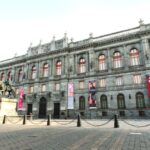
Nearest at 0.04 kms.

One of Mexico City's most beautiful historic squares, it's a meeting place for booklovers and dealers.
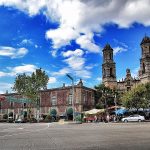
Presiding over Avenida Balderas like a fount of history, the Old Hipolito Church still strikes a somber chord.

Perhaps more controversial than Sebastián's big yellow replacement, Charles the Fourth is still riding high.
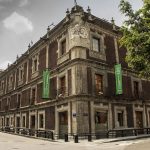
One of the most painstakingly restored 17th century complexes in the City, MIDE tackles a tough subject with style.
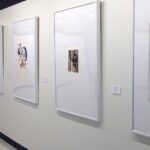
The National Print Collection is an enormous trove of important printed works from a wide variety of techniques.